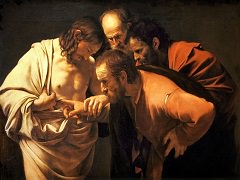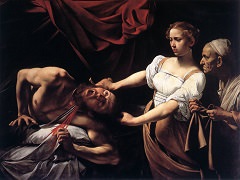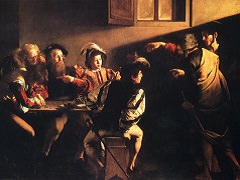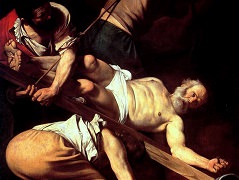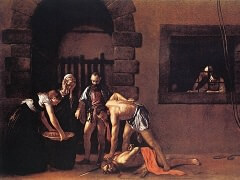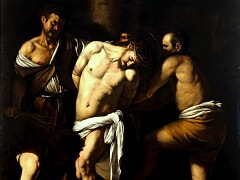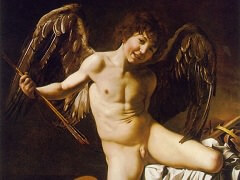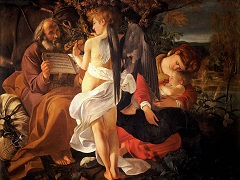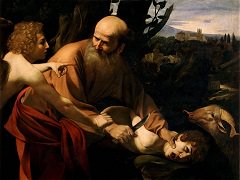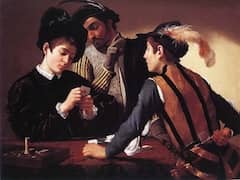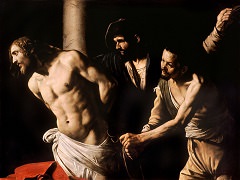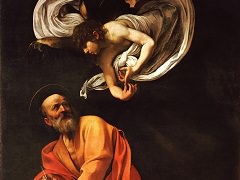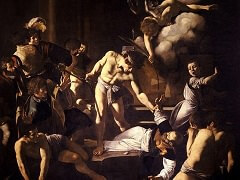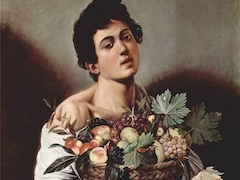Saint Francis of Assisi in Ecstasy, 1595 by Caravaggio
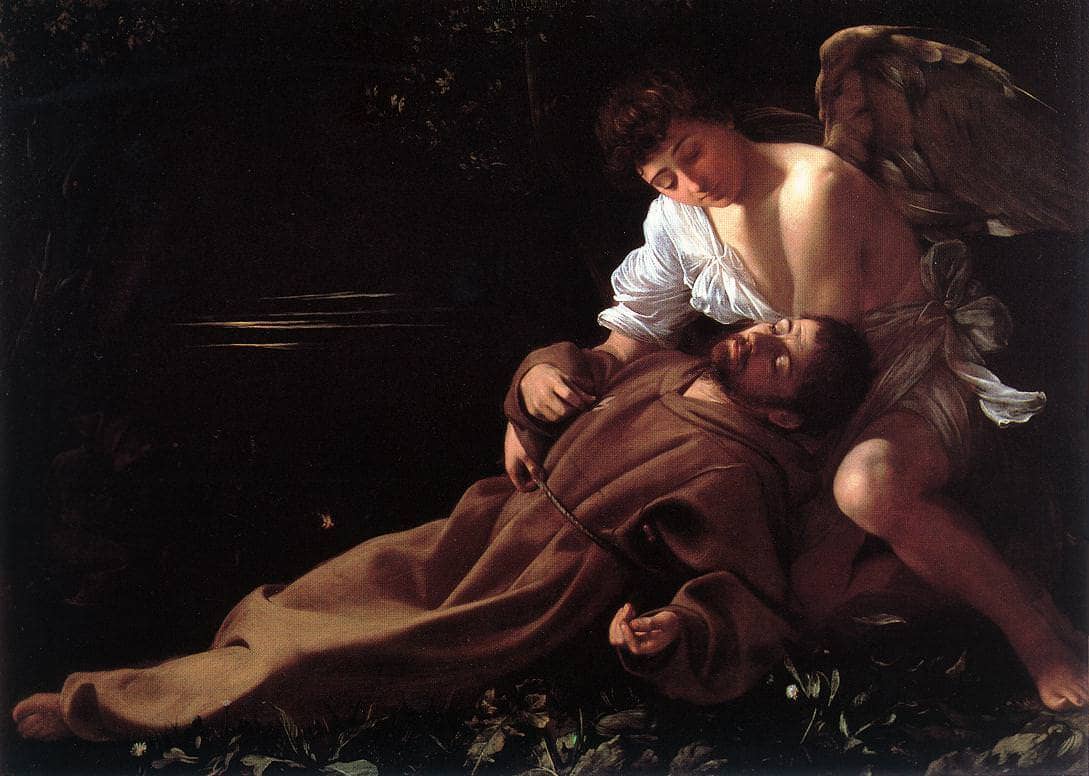
This compelling rendering of St. Francis receiving the stigmata on Mount Alverna has been identified with a picture given by Ottavio Costa to Abbot Ruggero Tritonio of Udine in c. 1606/07 and was probably subsequently acquired from Tritonio's nephew by Cardinal del Monte, in whose collection it was listed in the inventory of 1627.
The treatment of the angel and the delicate, diffused chiaroscuro, reminiscent of Savoldo, place the picture unmistakably in Caravaggio's early phase, despite the obvious anticipation of his later 'black' paintings. The Hartford painting is, in fact, the earliest undisputed surviving example in which Caravaggio employed that dark manner which was to become a hallmark of his style, and although it is here explicable narratively, since the event is meant to have occurred at night, it seems possible that this accident of subject-matter alerted Caravaggio to the effectiveness of strong contrasts of light and shade as a metaphor for spiritual experience, or, at any rate, prompted him to experiment for himself with an idiom with which he was already familiar through the Milanese works of earlier north Italian exponents of chiaroscuro. The rendering of the subject is, furthermore, highly original, since Caravaggio dispensed with the traditional seraph in the sky and stressed instead the personal nature of the saint's vision as, insensate to this world, he imitates the dead Christ in his pose and is sustained, Christ-like again, by an angel.
Another interesting detail is the fact that the wound on St. Francis's right hand has been painted over, possibly by Caravaggio himself, with the effect of transferring the drama further from outward forms and symbols to 'inner' and only partially articulated feeling. Francis's companion, Brother Leo, is discernible in the left middle distance of the picture, as are the shepherds in the background who watch the miraculous illumination of the night sky.

